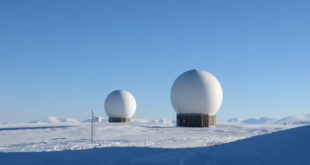In late 2014, the Internet was all abuzz over a video that purported to show a working hoverboard called Hendo hoverboard, sailing over a copper track—rider attached.
Exploiting Arx Pax’s Magnetic Field Architecture (MFA) technology, the Hendo hoverboard uses electromagnetic energy—with two downward-firing disc-shaped “hover engines” creating an opposing magnetic field—to levitate itself off the ground. Hendo is based on maglev train technology, but where maglev needs tracks to stay balanced, the Hendo can move in multiple directions.
“The primary magnetic field in our hover engines—and that’s where the secret sauce is—focuses electromagnetic energy downward.” “Our hover engine is over a conductive surface, which can be many different substances, and it generates a primary magnetic field. That field creates the eddy currents in the surface, and then the eddy current, following Lenz’s Law again, generates a secondary magnetic field. That mirrors the primary magnetic field. And just like two north poles of two different magnets, they repel one another. That generates lift.”
Arx Pax, enters into a partnership with NASA
California-based company Arx Pax, developer of real-life hoverboard entered into a partnership with NASA to develop applications for its magnetic levitation technology. The startup’s hover technology could help small satellites fly in formation for data, imaging, and other applications.
Arx Pax’s hover engines—a technology it calls magnetic field architecture—generate controllable directional thrust between an electric engine and a passive conductive surface such as copper or aluminum. “And conveniently,” says Henderson, “spaceships and satellites typically have aluminum skins.”
“Arx Pax and NASA will work together to design a device with the ability to attract one object to another from a distance,” Arx Pax representatives said in a statement today. “The device will draw, as well as repel, satellites at the same time, meaning it will hold a satellite at a distance and won’t allow it to move away or toward the capture device. This will enable the capability to capture, and possibly manipulate, microsatellites or other objects without making physical contact with them.”
Satellite Constellations
The lower cost of platform development and the ability to be launched in larger numbers has also driving growth in small satellite constellations, having ability to perform many simultaneous and distributed measurements or observations.
The desire for rapid revisit rates or persistence from low-earth-orbit (LEO) satellites is also driving the development of large constellations of small satellites, potentially with ~100-400 satellites. In addition to performing their core sensing mission, such satellites also have the potential to provide inter-satellite data relay, providing a highly survivable mesh of nodes capable of relaying data before downlink to ground stations.
Arx Pax’s technology could allow these tiny satellites to fly in controlled formation, forming what’s known as a distributed satellite system. Formation flying allows for more flexible and durable systems, and applications that require distance between sensors for tracking purposes. For instance, a formation of small satellites could better pinpoint the source of a radio signal, or more precisely determine the location of objects on Earth’s surface. That information could feed into big data applications from weather tracking to economic forecasting.
Microsatellite constellations can also provide many important strategic and tactical capabilities like delivering intelligence, surveillance and reconnaissance such as imagery intelligence (photo and synthetic aperture radar), signals intelligence (COMINT, ELINT), secure communication linking command and control (C2) nodes, early warning of missile attack and ballistic missile defence.
“It’s a big milestone for Arx Pax,” says co-founder and CEO Greg Henderson. “It goes way beyond the hoverboard. Hover engines have applications in space, in transportation, in industrial automation, in structural isolation.
Space Debris Removal
With half a million pieces of space debris cluttering Earth’s orbit, according to NASA, this means there is a growing problem of cluttering up our access road to space. Several companies and entities have proposed ways to get rid of derelict satellites and other space junk.
Magnetic field architecture could also be useful for solving the growing problem of space debris, which threatens satellites and space flights.
Arx Pax’s hover technology is scalable down to very small sizes, and would require relatively little power when operating over short distances in a low-gravity environment.
Henderson says NASA may also explore earthbound uses of the technology, including low-gravity simulation and mobility solutions for clean laboratories, where hover engines could replace comparatively fault-intolerant air bearings.
 International Defense Security & Technology Your trusted Source for News, Research and Analysis
International Defense Security & Technology Your trusted Source for News, Research and Analysis

